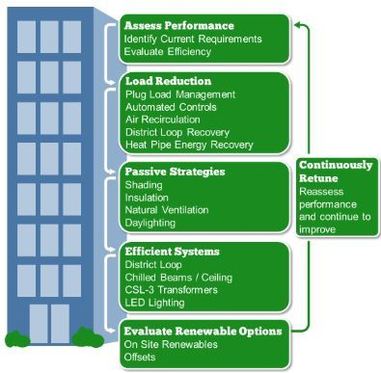
Four-hundred eighty-two. That’s how many zero-energy public and commercial buildings are verified or in progress in the U.S. today, per the New Buildings Institute. “Zero energy buildings”, according to the U.S. Department of Energy, “combine energy efficiency and renewable energy generation to consume only as much energy as can be produced onsite through renewable resources over a specified time period.” These buildings have also been called “net zero”, as zero is the amount of energy used from the electric grid after netting out (subtracting) the amount generated on-site per year.
While zero energy may be a tough target to achieve – and isn’t practical in every case – it’s a useful concept as an initial stretch goal. As designs are refined, some sites and buildings may be found to be capable of producing even more energy than they use, while others may not. But overall, higher expectations are likely to lead to higher performance.
Getting to zero cost-effectively requires strategically planning construction and retrofit projects early in the process. GSA’s SFTool provides a roadmap for such planning with links to many helpful resources. Gathering data about building goals, possibilities and limitations at the start is critical. Such detailed information provides the foundation for the project team to brainstorm and explore innovative strategies for energy use reduction. With a lighter load to handle, renewable power generation options become more affordable and manageable -- which is why such options should only be considered after the building has been made as efficient as possible.
By requiring a systematic process for building improvements, zero energy goals can help guide project teams toward new ways to save money and energy throughout their buildings’ lifecycles.
Ken Sandler is OFHPB’s contact on zero energy buildings.
Lance Davis coordinates zero energy building projects for GSA’s Public Buildings Service (PBS). |